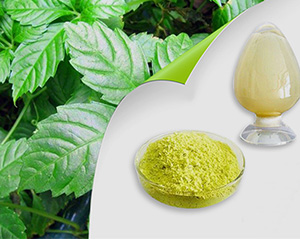Green flame retardants must meet the regulatory and performance requirements of relevant regulations
Release date:2022-11-28 Author:翊成网络g Click:
With the advancement of science and technology, the use of rubber continues to expand. Wires, cable sheaths, rubber ropes, conveyor belts, rubber products used in the electronic and electrical industries, and rubber sheets used in public places have corresponding flame retardant properties. The requirements and regulations of the rubber products are getting higher and higher.
As a filler, aluminum hydroxide is added to the rubber, causing defects inside the rubber, which are prone to stress concentration, resulting in a decrease in the elongation at break and tensile strength of the rubber. When aluminum hydroxide and rubber are blended, it is difficult to form a good interfacial bond between the two phase interfaces, and a large amount of filling will inevitably cause great damage to the physical and mechanical properties of the rubber. Li Juan and others used ATH, chlorinated paraffin and Sb2 O3 together. The inorganic flame retardant ATH does not need to be filled with a high proportion to achieve high flame retardancy requirements without affecting the physical and mechanical properties of rubber.
With the continuous improvement of people's awareness of environmental protection and safety, and with the continuous development and progress of new technologies, flame retardants will have greater development in the future. For now, environmental protection is still an important criterion for the use of flame retardants. Today I would like to share with you how to judge whether a flame retardant is green or not.

Whether a flame retardant is environmentally friendly is not determined by any organization or environmental label, but by the structure and performance of the flame retardant itself. Environmentally friendly flame retardants must meet the following three conditions: first, green flame retardants must be non-PBT substances (PBT: Persistent, bio-accumulative and toxic), that is, the release of chemicals to the environment does not have persistence, bioaccumulation At the same time, it should be a non-CMR substance (CMR: Carcinogenic, mutagenic or toxic for reproduction), that is, it has no carcinogenic, mutagenic or reproductive toxicity effects on the human body; secondly, green flame retardants are used throughout the product life cycle, Regardless of whether it is in the extraction of upstream raw materials, production, transportation or downstream use and recycling, the impact on the environment is minimal. Environmentally friendly flame retardants have little environmental release, less energy consumption and emissions in the life cycle, and are easy to recycle; finally, green flame retardants The fuel must meet the regulatory and performance requirements of the relevant regulations. Based on the above three standards, most of the current halogenated flame retardants are green and environmentally friendly.
In addition, based on the fact that any chemical including flame retardants may have undiscovered risks, large flame retardant manufacturers have also actively organized the "Voluntary Release Control Action Plan (VECAP)" to actively call on manufacturers and downstream users to continuously improve process, recycling packaging bags, reducing the release of flame retardants to the environment, and minimizing potential harm.

 Language
Language






 选择语言
选择语言

 苏公网安备 32100302010866号
苏公网安备 32100302010866号